A rich compound mushroom butter made from dried morels is a great way to use up a stash of dried wild mushrooms. This was a restaurant secret I used to use to be able to afford to put morels on restaurant menus.
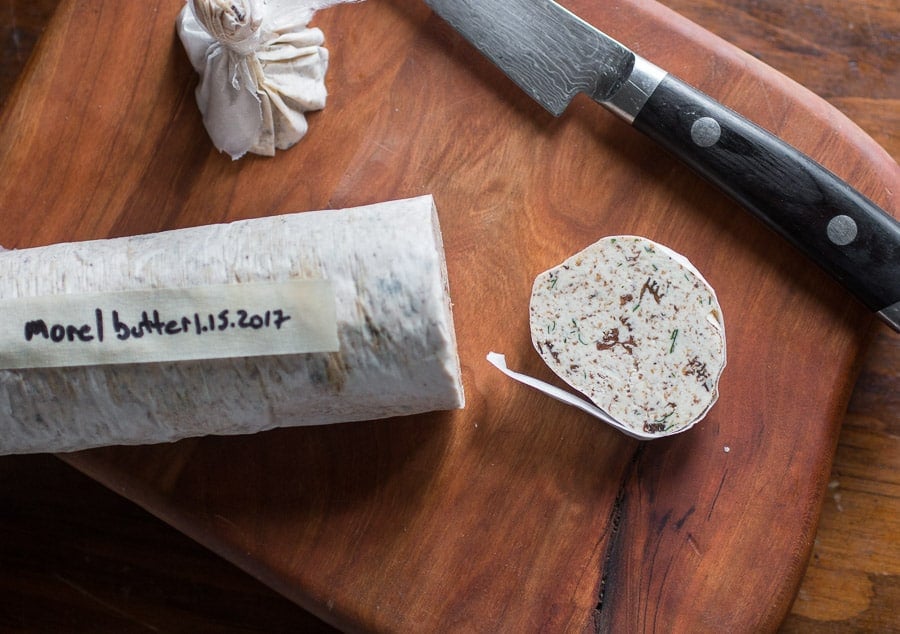
Over the past few years I've had a few chats about creating value added products for commercial outlets or things like that, which is a lot easier to talk about than actually do. One of the first things people mention to me is: "You could make wild mushroom butter!".
I nod and agree it's good, but there's this part of me that has a tendency to brush it off for later, as if the mushrooms demand some greater homage than buzzing into a simple compound butter.
Then, a few weeks ago I had a request from a reader for a butter made with dried morels. I thought to myself: ok, If you'd like some, I'll make some.
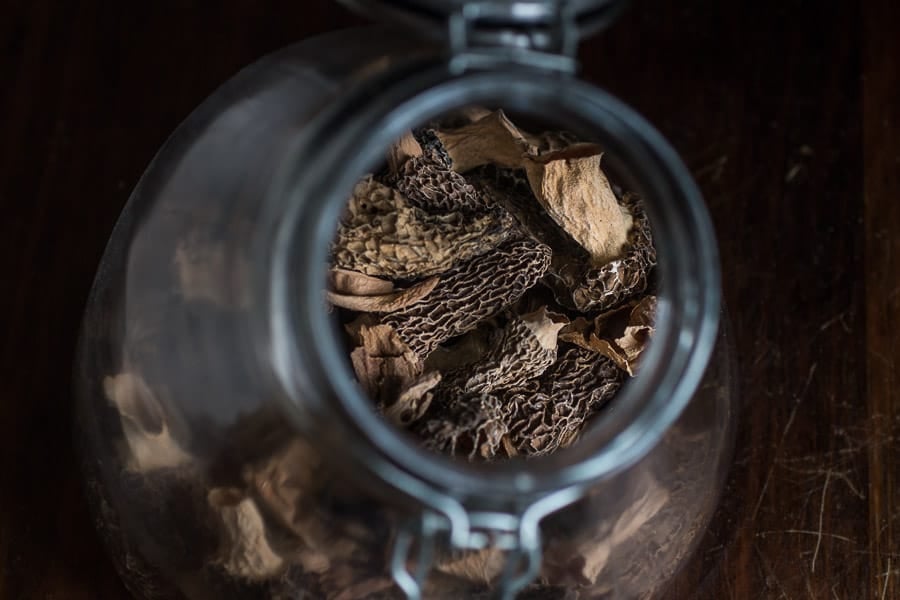
There's this phemomena, a tendency I notice about people that work with food (myself definitely included here). The jist is that the competitiveness of the food industry can alter what you think is worth cooking, giving the feeling that new, groundbreaking food, dishes, techniques and recipes are what one should strive to make.
There's a needed place for innovation and breaking out of old ideas, but the drive for the new, shiny things can blind you to simple, time-tested techniques.
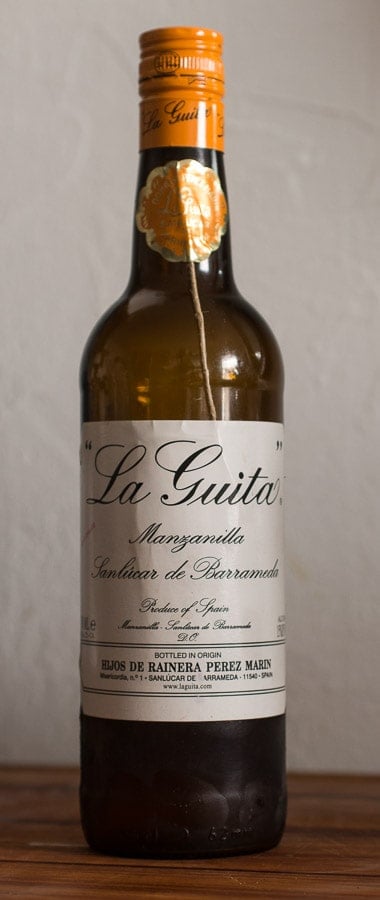
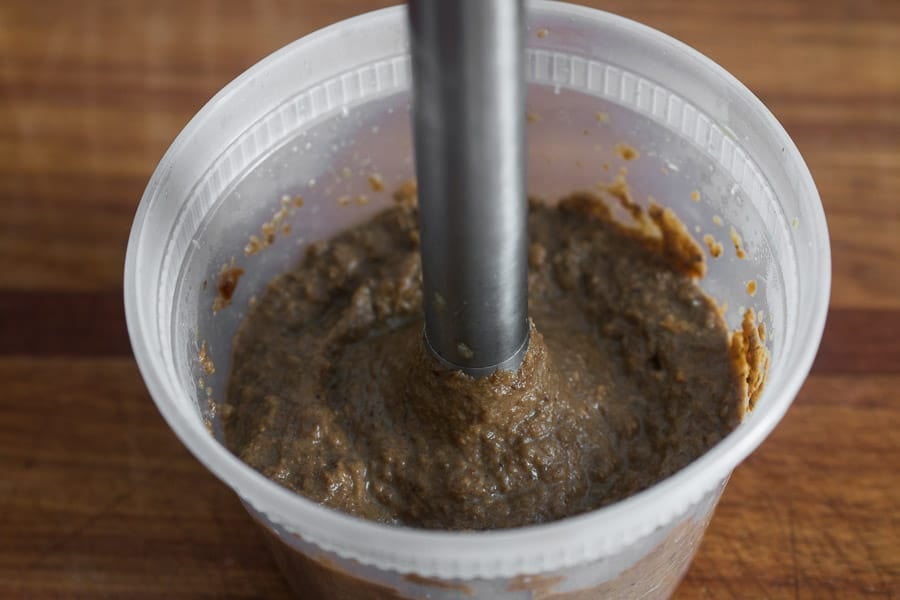


I use compound butters for all kinds of stuff, and it's easy for me to imagine how to put it, or a version of it together as I've made a lot over the course of my career. Been there, done that. I assumed there would be a ton of snappy looking butters online already.
But, as I was snooping around online I was horrified as to what I saw: broken butters, clumpy, chunky butters, butters made with dried mushrooms that instruct you to toss the reconstituting liquid (the horror! the nerve, the heresy!). What I imagined wasn't exactly what I saw.
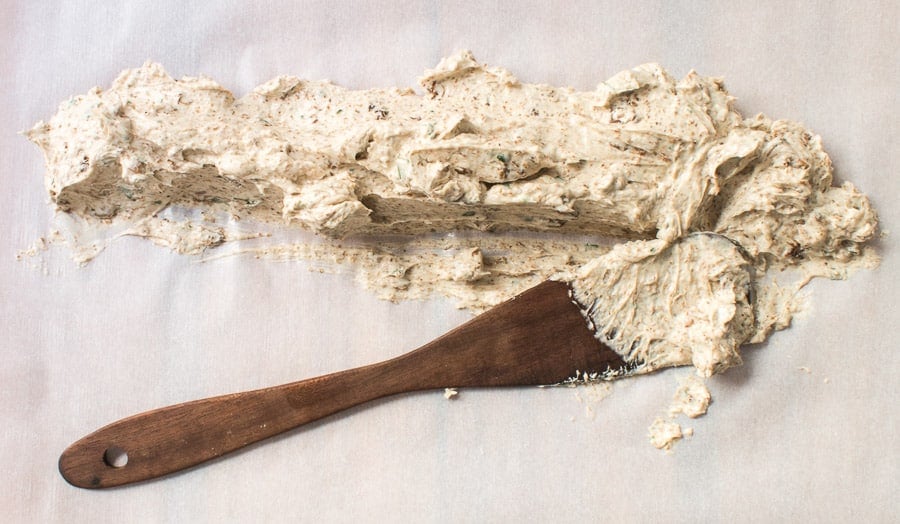
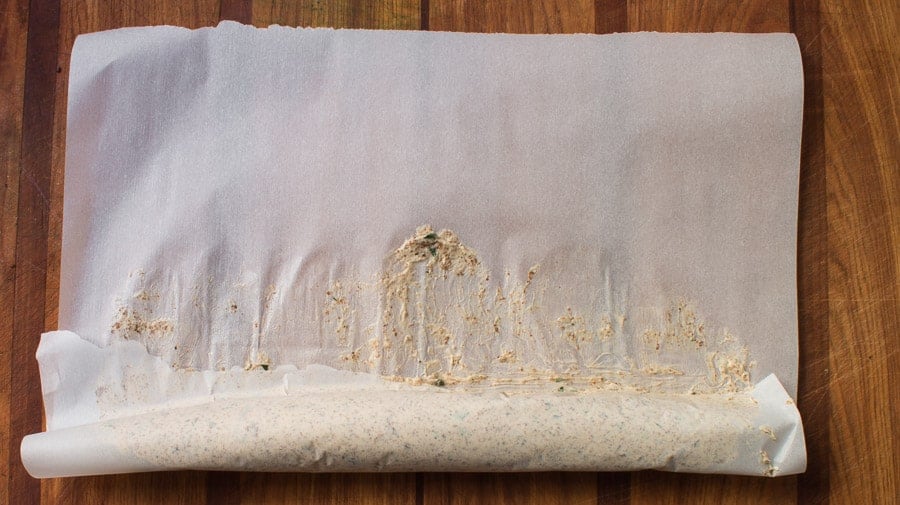
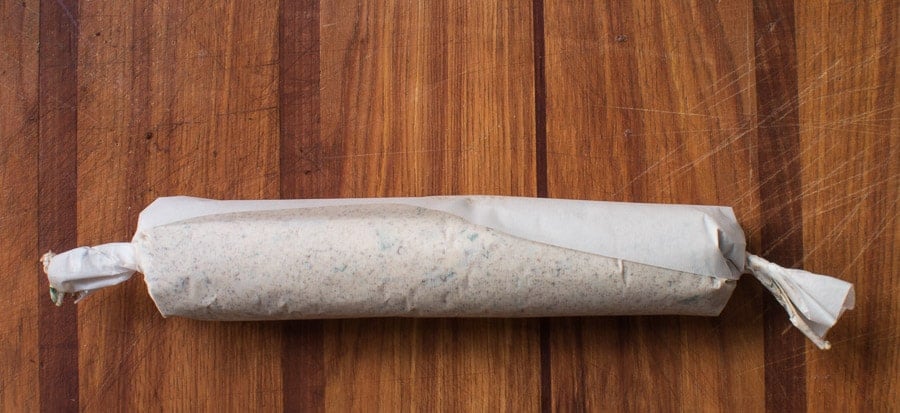
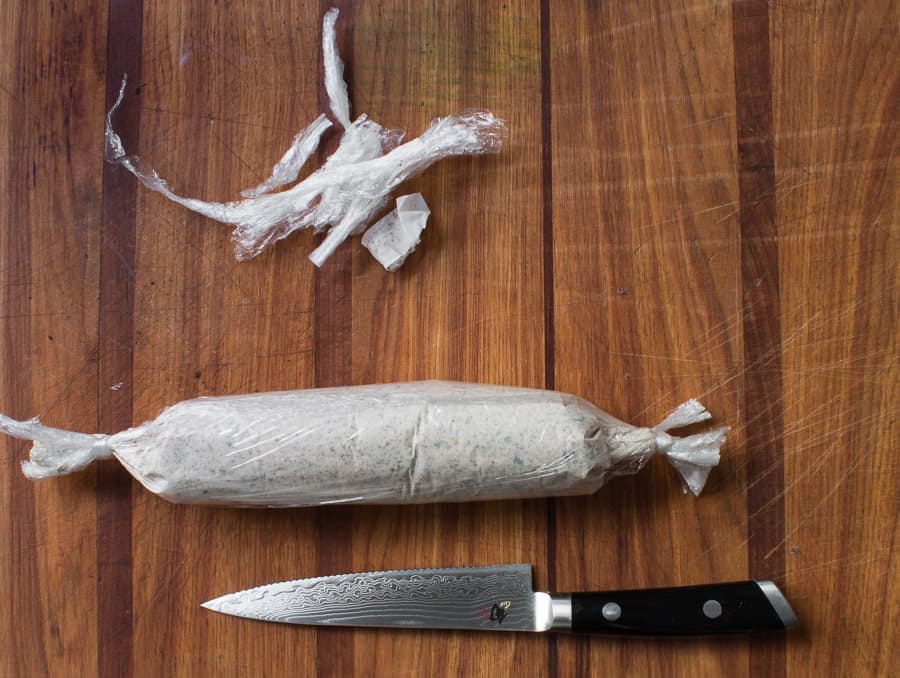
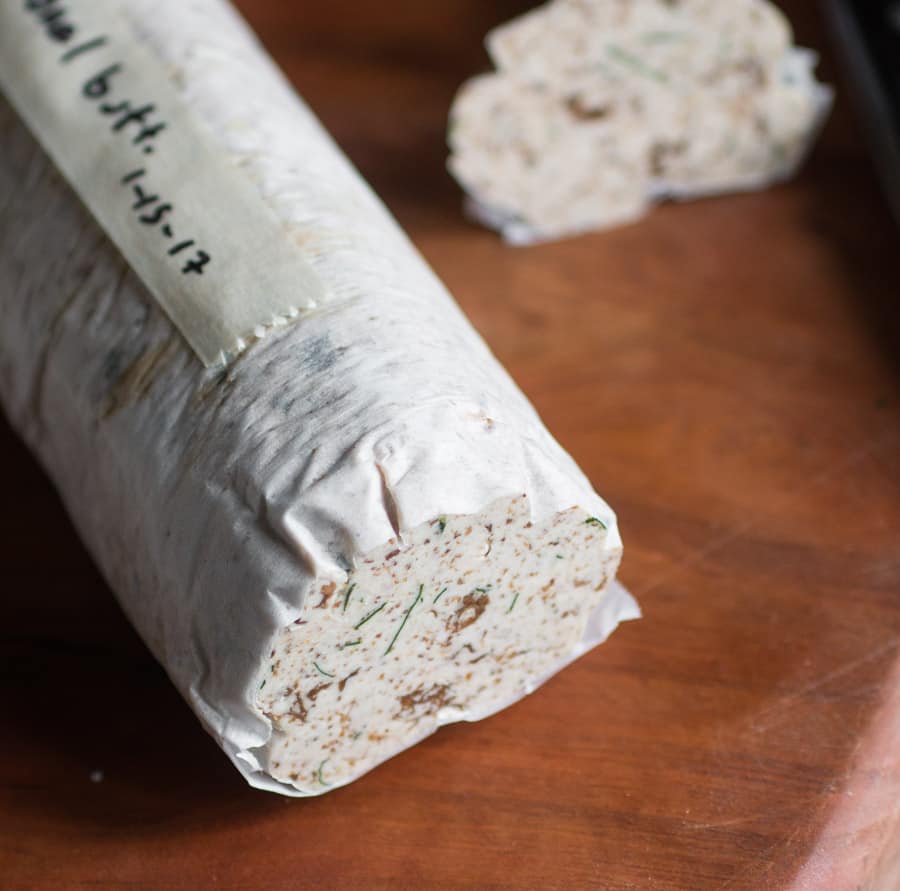
So, chef tics be damned, I do have something to offer in leading you through my process, making restaurant quality compound butters isn't hard, but you do have to pay attention to a few things, especially the temperature of your butter and the proportion of other ingredients you add to it.
In the end, It's a formula you could make not only with morels, but with any other rich flavored, dried mushroom. I think the only ones I really haven't thought were that great were butters made from dried lobster and or other Lactifluus species, excluding candy caps of course.
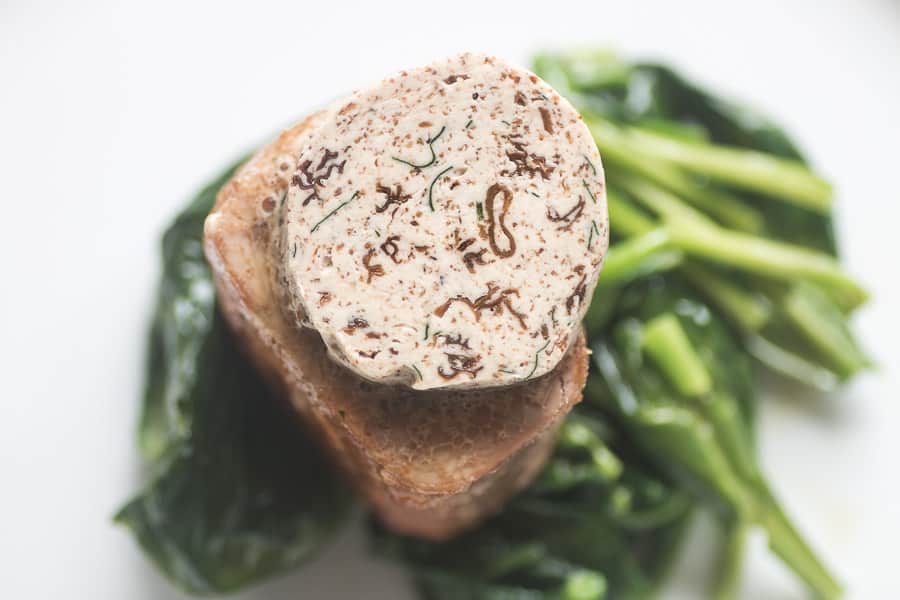
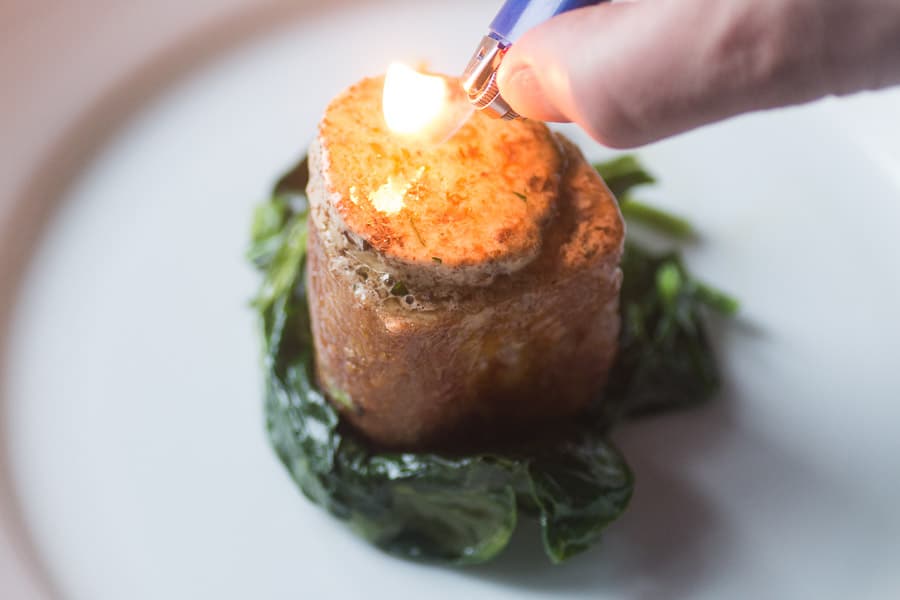
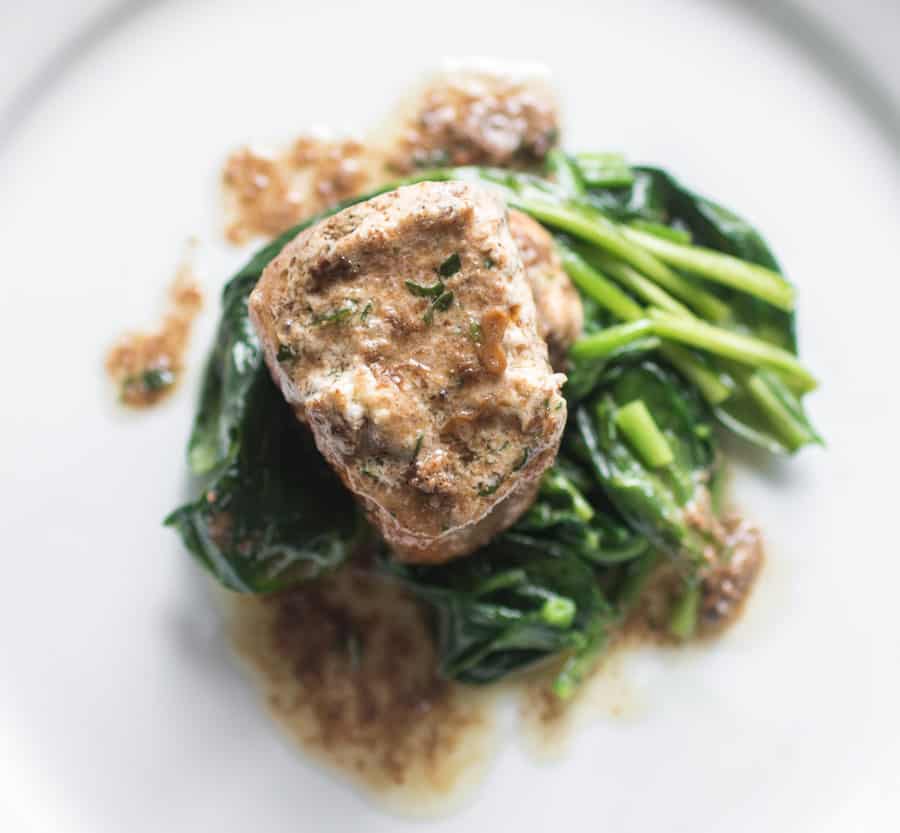
What you get is a rich, creamy butter that's super versatile. Because you've been careful not too add too many things and de-nature the basic emulsion of fat in the butter, you can do all sorts of things with it, you can even cook with it, gently. Here's a few ideas that would be great:
How to use mushroom compound butter
- Spread on high quality, hot toasted bread
- Toss with pasta, maybe with a little wilted greens (nettles!) and cheese
- Use it to thicken cream sauce at the end of cooking
- Put rounds on top of a piece of meat, like a steak (my go-to)
- De-glaze a roasting pan with some wine and stock, then whisk in the butter to thicken it for morel flavored gravy in a snap
- Spread it on a piece of bread and toast, then put some salad on top like a tartine
- Put layers of it on your bread for a grilled cheese sandwich, use something mild like a brie
- Stuff it underneath the skin of a bird you're going to roast
- If you mix the morel butter with a proportion of breadcrumbs, and an egg yolk or two, you could make dumplings that can be baked or poached (I do a version with bone marrow that's great in soup)
- A lot of people have told me they love to make cream of morel soup. As with the aforementioned pasta sauce, you can whisk a few tablespoons of this in at the end. Hell, you could base a soup off of this if you use enough, and are gentle enough with the heat.
- Of course you should finish morel risotto with some, especially if you hang on to it until spring and you have fresh morels to pair it with.
- Gently cook some eggs in it on the lowest heat possible.
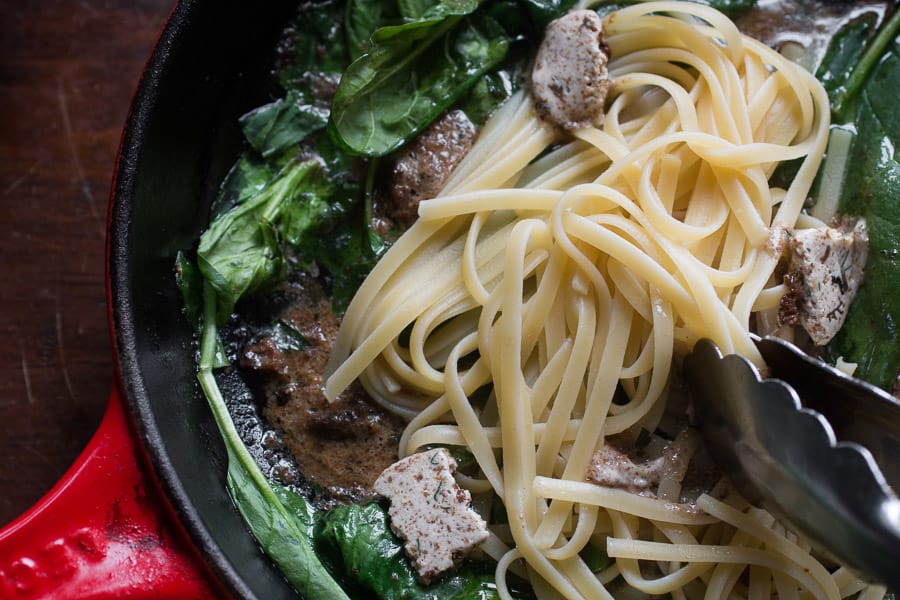
Dried Morel Mushroom Butter
Equipment
Ingredients
- 1.5 oz dried morel mushrooms about two cups of dried morels depending on size, I really suggest using a scale since they vary, especially if you have gigantic Midwestern morels.
- 1.5 cup boiling water
- ¼ cup dry sherry
- 1 lb unsalted butter cut into ~1x1 inch cubes, at room temperature
- 1 tablespoon flavorless oil like grapeseed
- 1.5 teaspoons kosher salt
- 1 small shallot diced ¼ inch
- 1 teaspoon chopped fresh thyme optional
Instructions
- Re-hydrate the morels in the water until softened, about 20 minutes. Agitate the morels in the water to remove any grit, then remove the morels, strain the liquid, then coarsely chop the morels. Reserve ¼ of the morels for garnish.
- Heat the shallot and the oil in a saute pan until the shallot is translucent, about 3 minutes on medium heat. Add the sherry and cook until reduced by half.
- Add the morels, their strained liquid along with the thyme and bring the mixture to a simmer, for 10 minutes to reduce the liquid a bit.
- Transfer the mixture to a blender or use a hand blender or a food processor to finely puree the mixture.
- Cool the puree to room temperature to avoid breaking the emulsion of the butter. When the puree is cooled, beat in a bowl with the room temperature butter and the reserved morels or whip in a stand mixer.
- It's important to really whip it a bit, since it incorporates air into the butter, similar to when you would make whipped cream. If I want to make fluffy butter to spread on bread, I may add an ice cube or two while it's in the stand mixer, which adds a little extra fluff.
- Taste the butter for salt and pepper and adjust until it's irresistible.
- When evenly mixed and fluffy, transfer the butter with a spatula to parchment or wax paper and roll tightly into a log, then tie the ends closed with string or plastic wrap.
- Label, date, and freeze the butter until needed. The butter can be kept in the fridge, and will keep for a week. If you're not going to use the butter in a few days, keep it in the freezer, then you can pull out the log(s), allow to thaw a bit, then cut off pieces as needed and return them to the freezer. Frozen, the butter will last for a year.

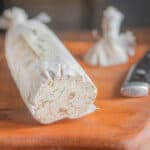
Tara
How long will this butter keep if frozen?
Alan Bergo
It will last for years. I vacuum seal mine wrapped in parchment.
Grace
Do you think this would work with a higher quality vegan butter, say made from cashew and coconut? Your recipe looks so good.
Alan Bergo
I can't speak to the emulsification of vegan butter here, but it might work. If you give it a shot let me know.
Elinor Wilber
It seems like this recipie is saying to use 1/4 of the motels as garnished, uncooked. I’ve always considered eating uncooked morels a little risky. What are your thoughts?
Alan Bergo
You are absolutely right that raw morels should not be eaten. I was just looking over a review copy of a foraging book someone published near me, and I was horrified to see "chocolate dipped, raw mushrooms" with morels as a suggested species. Not a recipe I'll be trying, and the author should be ashamed.
The difference with this recipe is that the morels are denatured by drying and during re-hydration with very hot water.
Jessica North
Would using fresh morels instead of dried work?
Alan Bergo
Yes! refer to my recipe using fresh porcini. https://foragerchef.com/fresh-porcini-butter/
Ron
Great post, chef. Are you looking for any reduction in the mushroom liquid when you bring it up to simmer? In my head, not having tried the recipe, 1.5 cups of liquid to 1lb of butter seems like a lot. I do like the point you make in the comments section about how the added liquid makes the butter melt faster.
Alan Bergo
That's a good question. 1.5 cup is a good amount of liquid but the mushrooms absorb a decent amount and the simmering further reduces it a bit. The final pureeing of the mixture emulsifies it so that there isn't anything to worry about incorporating it into the butter, as long as it isn't too hot.
Ron
Thanks for that. No one likes a weepy butter. Haha
Deborah???? Porter
A wonderful post! I’m heading to the oantry now; with nettles just starting to appear again, it’s a heady thought, pairing such a butter with those first fresh greens. I’m thinking too, of topping moose tenderloin. Thank you!
Alan Bergo
Nettles and a little more butter is a great idea, and I hadn't even though of that. I'm definitely going to be making. Thanks Deborah.
Valerie Barfield
I’ve seen several warnings about consuming wild mushrooms with alcohol. This is disturbing because I need a nice libation with my Morels! What do you think about that? The compound butter looks great
Alan Bergo
Hi Valerie! From my experience, the only mushrooms I know of that you need to avoid are those in the Coprinus genus, mushrooms like Coprinus atramentaria. That being said, there is some debate as to whether all Coprines cause the same reaction, and my assumption is no, since I have consumed alcohol on plenty of occasions eating Coprinus comatus/shaggy mane. I do not eat common ink caps/Coprinus atramentaria as I enjoy alcohol to much to have to worry about being violently sick for the sake of eating a single mushroom when they're are lots of mushrooms available. I have never heard of an alcoholic reaction to morels, or any other mushroom except Coprinus atramentaria and very closely related species. So basically, you're good, just don't eat common ink caps if you like to drink! Remember that sensitivity varies greatly from individual to individual, and mushrooms should always be served in small doses to those that have not enjoyed them before, especially with more obscure species. Hope that helps.
Jacqui
Dear Valerie and Alan,
In fact there is at least one other species suspected to cause gastric upsets in combination with alcohol for some, but not all, people. Another is Suillellus luridus (formerly Boletus luridus) - one of the blue-staining boletes. I have eaten tonnes of this mushroom, with accompanying wine, with no ill effects. One of my friends had an unfortunate event after a dinner of pasta and mushrooms at our place. Of course we cannot KNOW that it was the bolete and the glasses of wine that caused this because we do not intend to repeat the experiment with her to check whether it happens again ...
Nonetheless. this is not a general problem with mushrooms, just with a very few particular ones and I have never heard that this is a problem with morels.
Alan Bergo
WOW. That's news to me. Makes me wonder if other blue-stainers can have reactions in some people. Thanks for that great piece of info Jacqui, I stand corrected.
Jacqui
It's actually even mentioned on Wikipedia, but with lots of uncertainty. Of course nobody wants to do the well repeated and properly controlled experiments after throwing up the first time ... so who knows if it's true?
But once again, this is not a standard feature of blue-staining boletes. Neoboletus luridiformis (aka Boletus luridiformis aka Boletus erythropus ... the taxonomy is a MESS) is widely consumed here in France and I've never heard of problems.
Valerie Barfield
Thank you Alan and Jacque!
Carla Beaudet
Ok. I realize this is a well-informed tutorial on compound butter making, but I need to ask - have you tried cooking dried mushroom powder in a small amount of butter, then letting that cool before whipping it into the room temperature butter? If not, why would you eschew this approach, and if so, how does it compare with the re-hydration method?
Alan Bergo
Hi Carla, great question. There's a few different reasons I haven't made mushroom butter with mushroom powder, I'm going to try and keep this as brief as possible.
1. Dried mushrooms can contain grit.
Grinding them to powder doesn't remove the grit. If you meticulously clean mushrooms before you dry them, it's not an issue, but I may dry mushrooms specifically because they were too dirty or laborious to clean fresh, reconstituting them ensures I can rinse away any and all debris before serving them to someone. At home, in a casual situations this isn't a problem, and depending on what sort of terrain you pick mushrooms in, you may not even notice, but morels picked in sandy soil can be very difficult to work with. I have seen guests break teeth and crowns on debris from wild food, and the restaurant will always be picking up the bill in those situations. Those situations are rare, but even a single crunch of grit is unacceptable in professional kitchen scenarios when it could've easily been removed by rehydrating, IMO.
2. The flavor of mushrooms is more soluble in water than it is in fat in an oil form. Cooking mushrooms in oil, from my experience, will yield a less potent finished product, I did some experiments trying to develop flavored oils with different species a few years back, only boletes seemed to give off anything noticeable, and it wasn't nearly as good as the flavor derived from rehydrating.
3. Adding water to the butter in the form of re-hydrating mushrooms helps ensure a quicker, and more enjoyable melting for service/eating.
No one wants to eat a cold chunk of butter. If I were to cook butter with some mushroom powder, as the butter melts, the emulsion is denatured/compromised, and the dairy moisture/water will start to evaporate, concentrating the fat. Pure fat/solidified oil/lard at room temperature has a greasy mouthfeel to me. Part of the reason soft butter spread on bread is tastes so good is that the emulsion of dairy solids and fat together gives soft, room-temperature butter it's enjoyable feel. Adding more pure fat to soft butter will make it harder, as opposed to soft. When I put a slice of butter on a piece of meat, I want it to be at the perfect point of melting for the guest to enjoy it. If they have to wait for firm, cold butter to melt over their piece of meat, it can cool it down, and run the risk of the plate bouncing back to the kitchen. This is less of an issue where the butter will be used as a cooking medium, or folded into something that it can easily re-emulsify into, like cream sauce or a gravy bound with a strong emulsifier like flour or roux. Relating again back to no#2, the flavor of purees of dried mushrooms is strong and is a dependable way for me to control flavors.
4.Look/texture.
The morel butter here includes a proportion of the re-hydrated mushrooms that are folded back into the butter. With morels especially, people associate them not only with their flavor, but with their spongy honey comb texture. Using only mushroom powder means that I can't have physical pieces of mushroom in the butter itself, which I think adds to the attractive, and versatile-ness of the finished product. Guests ordering something that says morel on it will likely get more enjoyment out of eating a dish using mushroom butter if there are physical pieces of mushroom in it, and not just a puree or powder, IMO.
There's my extra long two cents. Again, thanks for your question.
Carla Beaudet
Well, thanks for that full reply! My current project is a flavor comparison between the many dried boletes on my mushroom shelf. To compare their flavors I'd decided to make mushroom butter out of them all and then taste side-by-side, which would inform my future foraging efforts. But then your post popped up, and now I need to reconsider my method for making said butters.
1) The grit thing isn't an issue for me; I clean my finds meticulously.
2) Flavor extraction is really my main concern, so I may well find this is so, and that would be reason enough to re-hydrate.
3) I had not considered the ease of melting issue, but it's another argument to re-hydrate.
4) While you're obviously right about disappointment if something didn't resemble a morel in the morel butter, in my application, where I want to make everything the same except for the flavor, fine grinding actually works in favor of this experiment. There's no reason I can't puree the bejezuz out of the sauteed mixture to achieve a very fine and even texture.
In consideration of these things, I think I'll do a pre-experiment with a bolete I have in quantity, B. nobilis, where I make a butter using the powder method and one using the re-hydrate method. Obviously I'm leaving out the alliums and herbs, although I'm sure they'd be delicious. I'll report back when I know something.
Alan Bergo
Glad you could pick some nuggets out of that diatribe. Keep me in the loop, would to hear about your results.
Carla Beaudet
My initial results are: The powdered mushrooms actually lent much more intense, nutty flavor to the butter, but they also made for a fairly gritty textured butter, not due to dirt, just owing to the fact that they were never re-hydrated. The re-hydrated then pureed mushrooms made a better textured butter, but lacked the depth of flavor of the powdered ones. I think the next thing I'll try is 1) powder, 2) re-hydrate the powder with as water as possible, to form a paste 3) saute the paste in butter 4) cool 5) whip with softened butter.
Alan Bergo
Interesting, since I found purees in baking were much more effective. Will be interesting if you can make a nice puree by just hydrating and blooming the powder. Keep me posted! I'd love to add a variation to the post.
George Brian Lambert
How about re-hydrating with milk, I often do this with my dried morels overnight.
Alan Bergo
You can definitely rehydrate with milk for this recipe, but I would keep in mind that milk is perishable, and could possibly shorten the shelf life of the butter if it's refrigerated. Cream or half and half would work fine too, cream would be the most stable since it's the closest in fat % to butter.